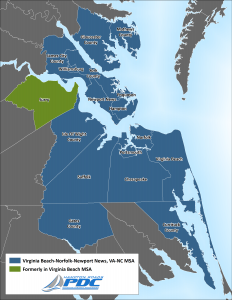by Elizabeth Mejía-Ricart
Segregation, discrimination; these are words that describe a problem that seems long resolved in the privileged American mind. But is it really the case? Unfortunately, the city of Richmond attests that racial prejudice still persists nowadays, due to a failure to address its segregated foundation. In fact, according to Benjamin Campbell in his book Richmond’s Unhealed History, “the troubles that still afflict the culture of metropolitan Richmond have their roots in problems long denied, changes not attempted, prophecy unheeded, injustice unacknowledged.” (p. 150)
Urban planning in Richmond is just one of the many examples of how the segregational policies of the early 20th Century have prolonged consequences that extend to present times. As Campbell contends, in 1929 the city passed an ordinance that required that persons whom the state prohibited from marrying could not live next to each other. Essentially, segregation of neighborhoods was established between black and white individuals. This law had two main consequences. First, it determined housing quality, namely, housing for Richmond black residents was described as “disgraceful, inhuman, pestilential and in a civic sense entirely too costly to be tolerated by the people of this city”(Campbell, 143). Second, it led to redlining by all major Richmond banks. In the 1930s, the federal Home Owners’ Loan Corporation (HOLC) under the direction of the Federal Housing Administration (FHA) rated American neighborhoods for their creditworthiness, using race as one of the major criteria to delineate between neighborhoods. Therefore, as Campbell highlights, every single African-American neighborhood was given the lowest rating and was redlined for mortgages.
Some people may argue that these segregational and discriminatory practices have no relevance nowadays, especially since urban renovation took place between 1955 and 1972. However, we must ask ourselves, who carried out these policies? As Campbell suggests, Richmond’s urban renewal project was in charge of white individuals “with little participation or input from the African- American community” (p. 159). More importantly, with the fragmentation of metropolitan cities into non-related segments, these policies continued to perpetuate segregational systems in Richmond. Nowadays, as a consequence of this urban renewal, we can observe a marked distinction between urban and suburban neighborhoods, which is mainly determined by the racial and class differences. Furthermore, as studies from the Richmond Urban Institute have demonstrated, great disparities in mortgage activity between black and white neighborhoods have persisted even after the discriminatory policies were reversed in the Mortgage Disclosure Act of 1975 and the Community Reinvestment Act of 1977.
However distant words such as racial discrimination, inequality of opportunities and favoritism may seem to privileged Americans nowadays, it must be understood that these practices are still present in our society. It may not seem evident to some, but the truth is that remnants of a segregational foundation deeply affect Richmond’s spatial, social and economic structure. Thanks to the city’s fragmenting planning based on former racial and social characteristics, the interactions that take place are primarily homogeneous and its opportunities continue to be inherently unequal.
Elizabeth Mejía-Ricart is from Santo Domingo, Dominican Republic. She is a rising sophomore at the University of Richmond who is planning to major in Economics and minor in Mathematics. Elizabeth is a Boatwright and Oliver Hill Scholar, who is part of the University Dancers Company on campus. This is Elizabeth’s first experience as an A&S Summer Fellow, however, she is excited to discover more about the University of Richmond’s history and about the city itself through Untold RVA and her collaboration with Free Egunfemi.

